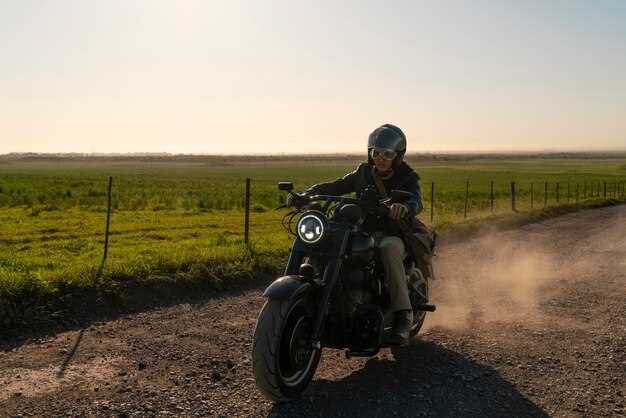
Motorcycle culture is a rich tapestry woven from the threads of tradition, community, and individual expression across the globe. From the bustling streets of Tokyo to the open highways of the American Midwest, bikes play an integral role in shaping lifestyles, forging connections, and defining local customs. Each region boasts its own distinct motorcycle scene, influenced by factors such as geography, economy, and social values.
In many countries, motorcycles are more than just a mode of transportation; they symbolize freedom and adventure. In contrast, in some urban centers, bikes serve as practical solutions for navigating congested city streets. This dichotomy highlights how global factors contribute to varying perceptions and uses of motorcycles, shaping both individual identities and communal bonds.
As we delve into the nuances of motorcycle culture worldwide, we will examine the distinctive elements that define various scenes. From the camaraderie found in biker clubs to the influence of local customs and aesthetics, the exploration reveals not just how we ride, but why we ride, celebrating the diversity that exists within the universal language of motorcycles.
Regional Variations in Motorcycle Preferences and Designs

Motorcycle culture is profoundly shaped by regional differences, influencing not only the types of bikes people prefer but also the designs that emerge within various locales. In North America, chopper and cruiser motorcycles are emblematic of the free-spirited lifestyle, reflecting a sense of individuality and rebellion. The customization of bikes is a major aspect, allowing riders to express their personal style and values.
In contrast, European riders tend to favor sport and touring motorcycles, which emphasize performance and comfort. The design philosophy here revolves around engineering excellence and efficiency, catering to both the winding roads of the Alps and the long distances typical in the region. European brands often incorporate advanced technology into their motorcycles, appealing to a rider’s desire for both speed and safety.
Asia showcases a fascinating array of preferences, particularly in countries like India and Japan. In India, commuter bikes are highly popular, designed for practicality and fuel efficiency to suit the congested urban environments. Conversely, Japan is known for its cutting-edge designs and high-performance machines, with a strong culture surrounding racing and innovation driving preferences toward superbikes.
Latin America exhibits a vibrant motorcycle lifestyle characterized by small, agile bikes that navigate both urban chaos and rural landscapes. The designs often emphasize ruggedness and durability, embodying the resourcefulness of riders who require reliable transport across varied terrains.
Each region’s unique culture and lifestyle profoundly impact the motorcycles that riders choose, whether it’s for daily commuting, long-distance travel, or spirited joyrides. These variations illustrate how deeply motorcycles are interwoven with local identities, preferences, and practical needs. As the global motorcycle community continues to evolve, these regional differences remain a testament to the diverse lifestyles that motorcycles support across the world.
Impact of Local Regulations on Motorcycle Ownership and Use
Local regulations play a crucial role in shaping motorcycle culture and lifestyle across the globe. These rules govern various aspects of motorcycle ownership, including licensing, emissions standards, safety requirements, and insurance mandates. As a result, the legal framework in each region significantly influences how residents perceive and interact with motorcycles.
In countries with stringent licensing requirements, such as Japan and many European nations, aspiring motorcycle owners often face rigorous training and testing. This leads to a more informed and responsible riding community, fostering a culture that prioritizes safety and skill. Conversely, in regions with minimal regulations, such as certain parts of Southeast Asia, it is common for individuals to ride without formal training or safety equipment, which can result in a higher incidence of accidents and a different approach to motorcycle lifestyle.
Environmental regulations also affect motorcycle ownership and use. In urban areas with strict emissions regulations, motorcycle manufacturers are pushed to produce cleaner, more efficient models. This not only encourages eco-friendly riding habits but also affects the choices consumers make when purchasing a bike. For instance, electric motorcycles are gaining popularity in regions emphasizing sustainability, highlighting a shift in lifestyle preferences influenced by local policies.
Insurance requirements vary significantly worldwide, impacting the cost and accessibility of motorcycle ownership. In countries where insurance is mandatory, such as the United States and Canada, riders must factor in these costs, which can deter potential owners. In contrast, locations where insurance is either affordable or optional may see a more vibrant motorcycle culture, as lower financial barriers encourage more people to embrace riding as a primary mode of transportation.
Moreover, local traffic laws, such as lane splitting permissions, play a vital role in shaping the riding experience. In regions like California, where lane splitting is legal, motorcyclists enjoy greater mobility in congested traffic, reinforcing a motorcycle-oriented lifestyle. In contrast, areas where this practice is prohibited might discourage potential riders who seek practicality in urban commuting.
In summary, local regulations significantly impact motorcycle ownership and use across the globe. By shaping the safety, environmental, and financial aspects of riding, these regulations not only influence individual lifestyles but also contribute to the broader culture surrounding motorcycles in different regions.
Cultural Significance of Motorcycles in Different Societies

Motorcycles are not merely a mode of transportation; they embody a unique lifestyle that varies significantly across cultures. In many societies, bikes represent freedom and adventure, allowing riders to explore their surroundings in a way that cars cannot. This sense of liberation is particularly pronounced in places like the United States, where motorcycle culture is interwoven with the idea of the open road and personal independence.
In contrast, in countries like India, motorcycles serve a practical role in daily life. They are essential for commuting, enabling families to navigate congested streets efficiently. Here, bikes symbolize resourcefulness and adaptability, crucial for urban living. The growing popularity of two-wheelers in developing nations highlights a shift in lifestyle, where motorcycles increasingly become a status symbol and a means of economic empowerment.
In some cultures, motorcycles are deeply rooted in social identity. For example, in Japan, the biker culture is often linked to youth subcultures, where customization and individuality play significant roles. This connection fosters a sense of belonging among riders, making bikes a vital part of their lifestyle and social interactions.
In many Western countries, motorcycle clubs cultivate brotherhood and camaraderie, emphasizing solidarity among members. This communal aspect transforms the act of riding into a shared experience, reinforcing personal connections and loyalty within the group. Such dynamics reveal how bikes transcend their physical form, becoming vessels of cultural expression and community values.
Furthermore, motorcycles in different societies serve as a canvas for artistic expression. Custom paint jobs, unique modifications, and community gatherings showcase the creativity embedded in bike culture. In places like Italy, this artistic flair extends to motorcycle design, intertwining aesthetics with performance, making the biking experience deeply personal and culturally significant.
Overall, motorcycles hold diverse meanings across the globe, from symbols of freedom and practical tools to expressions of identity and art. This multifaceted significance reflects the varied lifestyles and values of different societies, illustrating the profound impact that bikes have on cultural landscapes.












